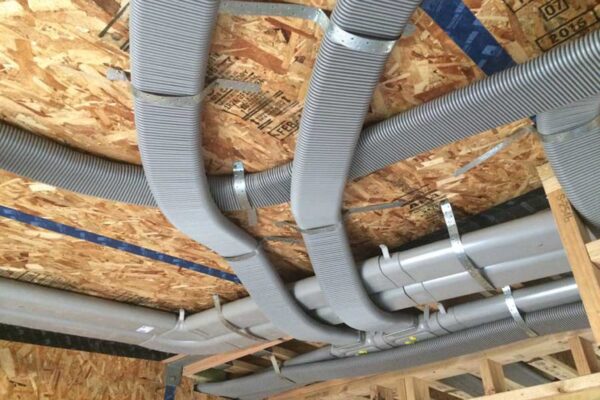This blog answers a heap of practical questions that we get asked about …. Costs, Noise, Maintenance, Size…..
More detailed explanations on the benefits of MHRV systems and how they are not the same as Positive Pressure Ventilation Systems are available on earlier blogs listed at the bottom of the synopsis below.
A very brief synopsis of MHRVs
MHRV is a system that uses the heat in stale exhaust air to preheat a continuous supply of incoming fresh air. The incoming warmed air also replaces moist outgoing air with dry air, therefore managing humidity. The incoming and outgoing air never meet. High grade filters also remove most allergens.
This process reduces the energy required to bring outside air up to ambient room temperature and provides a healthy indoor living environment. Risks to the building’s integrity are also removed through moisture removal.
For an MHRV to effectively work air tightness is required.
MHRV is different to positive pressure ventilation (PPV). PPV is specifically for ventilation where condensation is an issue, while an MHRV (the system) is focused more on controlling your environment regarding heating, cooling and air filtration.
For more detail check out our earlier blogs:
https://www.chattertonhomes.co.nz/ventilation-considerations-what-is-the-purpose
https://www.chattertonhomes.co.nz/mechanical-heat-recovery-ventilation-mhrv

Are MHRV’s expensive to run?
The energy recovered from the inside air is many times that of the energy required for the fan of an MHRV. Efficient brands tend to run on 30 watts an hour. The annual cost, at time of writing (2023), would be around $80 a year. This is less than an extraction fan which runs about 40 watts an hour.
Is the MHRV unit itself expensive?
In an airtight home, MHRV’s save money on heating and cooling whilst controlling allergens and humidity. The MHRV provides fresh air whilst keeping the house warm in winter and cool in summer, saving on energy.
Humidity is often overlooked but through its effective management the health of inhabitants and the building can be controlled without the need for dehumidifiers, future remedial work or discomfort and ill health. All of which have a large cost associated with them.
There are differing brands available and levels of efficiencies. The more efficient units do cost more. Prices currently range from $10,000 for an efficiency of 60-70%, to $25,000 for an efficiency of 90-95%.
We recommend units that meet the passive house standard and have gone through thorough testing.
Units also come in different capacities to match the size of the house volume. This is calculated to avoid a small unit being overworked, or a home having an unnecessarily large one.
Are the MHRV systems noisy?
Most certified units run at 40dB and are housed in a cupboard, so they are hard to hear. If you have a project, you can visit our Show Home to see, and hear, for yourself.
How big are the MHRV units?
The units are generally easily fitted into a linen or wide storage cupboard and take up space like that of a hot water cylinder. A Zehnder unit needs a space of approximately 1200 w x 600 d x 2400 h. They can sit higher up or on the ground but always inside the building envelope that it is servicing.
How much space is needed for the ducting of an MHRV?
The size of the ducting can vary depending on the brand. Generally, a 100mm ceiling service cavity is sufficient to lay the ducting between rooms. However, you may need a bit more space (about 200mm) above the unit itself to accommodate all the ducting as it connects to the main entry and exit ducts extending from the unit. This should be considered during the design stage.
The MHRV supplier will provide a recommended ducting plan to ensure it is installed in a way that maximizes efficiency.
Who installs the MHRV system?
We recommend someone who knows what they are doing as it is an integral part of the building package. Check with your builder.
Do MHRV systems require a lot of maintenance?
Aside from cleaning the ducting and changing the filters regularly (approx. every 6 months), the motors will run for many years with no attention needed.
Can we open windows when we have an MHRV installed?
Yes, you can open windows even with an MHRV installed. The MHRV will continue to operate in the background. While the system works most efficiently when the home is closed and airtight, it won’t take long for the MHRV to replace the volume of air let in through your windows with filtered, warmed air once the home is airtight again.
Head to our blogs and video blogs to learn more about what’s needed to achieve a healthy, comfortable, energy efficient home.










